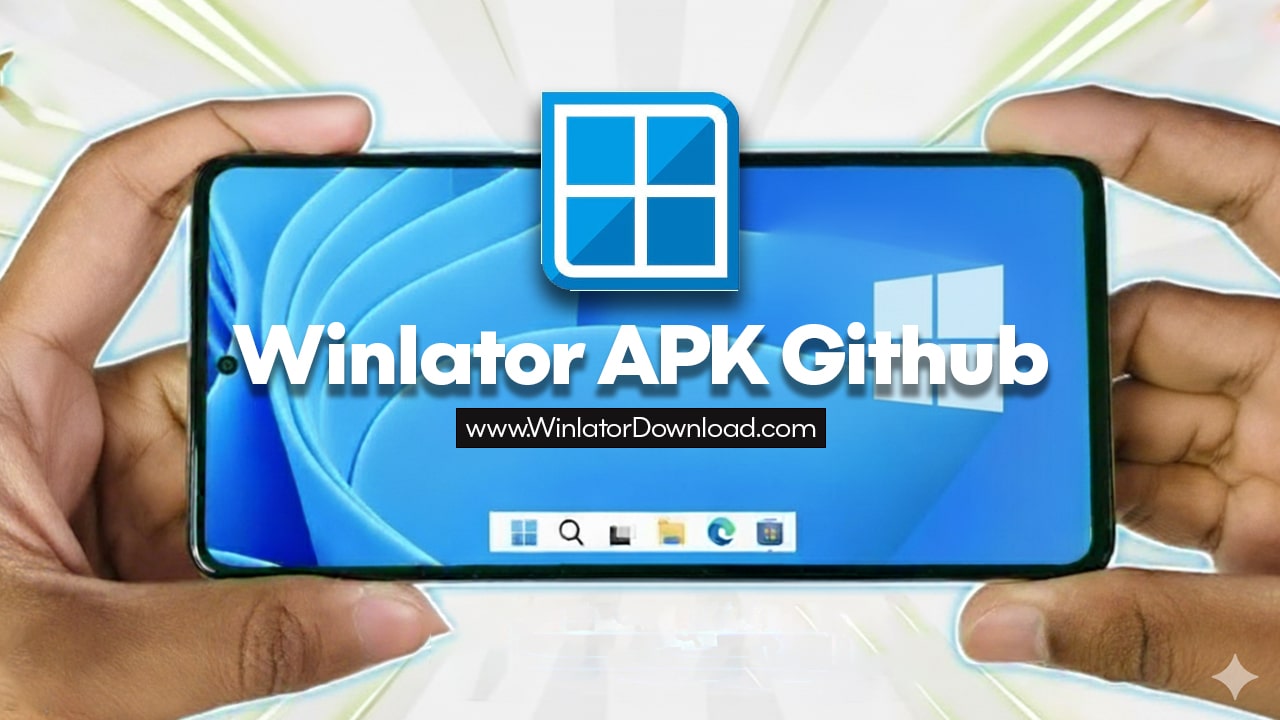Winlator is changing how people play old Windows games and run Windows programs on Android phones. It lets compatible Android devices run apps made for Windows by using Wine plus Box86 or Box64. These tools let x86 and x64 software run on ARM chips.
But because Winlator is so popular, many fake or harmful versions are floating around online. To stay safe and get the best performance, you should always use the official GitHub. In this guide, I walk you through what you need to know: where to get it, how to install it, how to optimize it, and how to fix common problems.
Why Use the Official GitHub Version
When you search for “Winlator APK,” many websites will show up offering downloads. Most are not safe. They might be outdated, broken, or even contain malware or annoying ads. Also, many of them leave out the large OBB (data) file that Winlator needs to work right.
The official GitHub release is the only trustworthy source. The developer (often under the GitHub name brunodev85) posts the proper APK and data files in the Releases section of the repository. You should never rely on random file‑sharing or APK mirror sites.
If you always download from that GitHub and check the Releases section, you lower your risk of getting a bad or tampered file.
How to Download the Official Winlator APK + OBB
To get Winlator working, you need two pieces:
-
The Winlator APK Github installer file
-
The OBB/data file (large file containing the Windows environment)
Here’s how to get them safely:
-
Go to the Winlator repository on GitHub (make sure it belongs to the correct developer account).
-
Click the Releases tab.
-
Download the latest stable version of the Winlator_X.X.apk (where “X.X” is version number).
-
Also download the OBB/data file, usually named something like main.X.com.winlator.obb. Sometimes the OBB is packaged with the APK, or the app may download it on first run. But to be safe, get it manually if available.
Installing Winlator Correctly
After you have both files, follow this step‑by‑step plan:
-
Enable Unknown Sources
In Android’s settings, allow your browser or file manager to install apps outside the Play Store (“unknown apps”). This lets you install the Winlator APK. -
Install the APK
Open the downloadedWinlator_X.X.apkand install it. -
Place the OBB File
After installation, Winlator will need the OBB/data file. You must put it in the correct folder. The steps:-
Go to
/Android/obb/ -
Create a folder called
com.winlator -
Move the OBB file (for example
main.X.com.winlator.obb) into that folder
-
-
Launch Winlator
Start the app. It should detect the OBB file and finish setup. This might include creating a virtual Windows desktop inside the container.
If everything is placed correctly, Winlator should boot up into its container environment without errors.
Understanding Containers, Drivers, and Wrappers
Once Winlator is installed, you’ll work inside a container. That’s like a mini Windows machine created inside your phone. For good performance, you must pick the right drivers and settings.
Graphics: Turnip vs. VirGL
-
Turnip: Best for devices using Adreno GPUs (common in Snapdragon chips). It uses Vulkan and gives better performance.
-
VirGL: More universal. Works for Mali or Exynos GPUs. But typically, it’s less efficient than Turnip.
DX Wrappers: Translating DirectX Calls
Games and apps use DirectX (DX) for graphics. Winlator must translate those to APIs your phone understands:
-
DXVK: Good for DirectX 9, 10, 11 titles. It turns DX calls into Vulkan.
-
VKD3D: For programs using DirectX 12.
-
WineD3D: More general, safer fallback. Good for old or less common games, though slower.
You choose the wrapper depending on the game’s DirectX version.
Tweaks to Improve Frame Rate and Stability
To get smoother performance, you can fine‑tune container and emulator settings:
Box86 / Box64 Presets
These control how the binary translator behaves:
-
Use Performance preset for smoothness in newer games.
-
Use Stability or Compatibility presets if a game crashes or acts oddly.
CPU Affinity
This tells Winlator how many processor cores to use. Set it to use the highest safe number of cores your device has. That gives the emulator more power.
Resolution and VRAM
-
Lower the container’s screen resolution (for example, 960×544) to raise FPS.
-
Set VRAM (video memory) close to your phone’s real GPU memory capacity. This prevents lag or stutter.
Using these settings gives many games a big boost in playability.
Fixing Common Issues
Even with the official files, users often face trouble. Below are ideas to solve them.
Low FPS or Stuttering
-
Check if the graphics driver is correctly chosen (Turnip vs VirGL).
-
Look for power‑hungry background tasks inside the container and close them.
-
Use Winlator’s internal task manager (if available) to kill unused processes.
-
Adjust resolution down or lower VRAM if necessary.
App or Game Crashes
Older games sometimes crash because new drivers or APIs break compatibility.
-
Try different DX wrappers (DXVK, WineD3D) and see which works best.
-
Use environment variables in container settings. For example:
MESA_EXTENSION_MAX_YEAR=2003
This forces older extensions for games that otherwise fail.
Container File Sharing Trick
You can set up a shared folder so all your containers use the same game files. Map a folder (like /Android/data/com.winlator/files) to a drive (e.g. E:). This saves space and makes it easy to manage your games.
Winlator Compared to Alternatives
Winlator is user‑friendly and reliable. Yet, there are other options like Mobox.
-
Mobox allows high performance in some games, especially on flagship Snapdragon phones.
-
But Mobox often requires more complex setup (like using Termux) and lacks an integrated UI.
For most users, Winlator’s ease of use and the official GitHub guarantees make it the better choice.
Final Tips and Safety Notes
-
Always double check that you are on the official GitHub repo.
-
When downloading, stick to the Releases section.
-
Never trust random APK mirror sites, especially for emulation tools.
-
After install, always pick the best driver (Turnip or VirGL) and right DX wrapper.
-
If performance is poor, lower resolution or change Box86 settings.
-
Use environment variables or fallback wrappers when crashes happen.
-
Setting a shared folder across containers helps manage games easier.
If you follow all these steps, you should get a stable, fast Winlator experience on your Android device. Let me know if you want help with a specific game, GPU type, or container setting!

